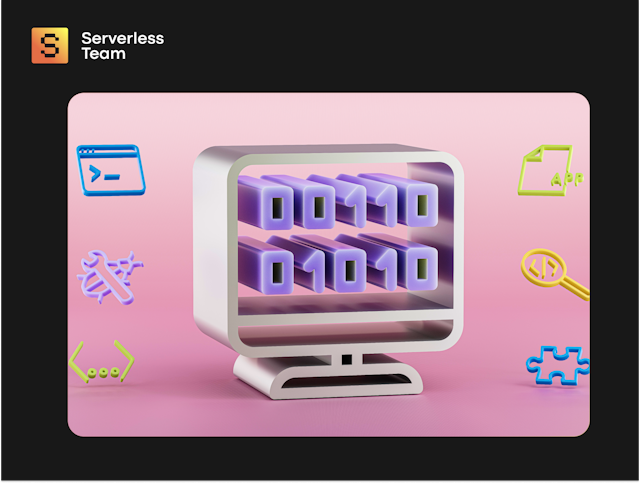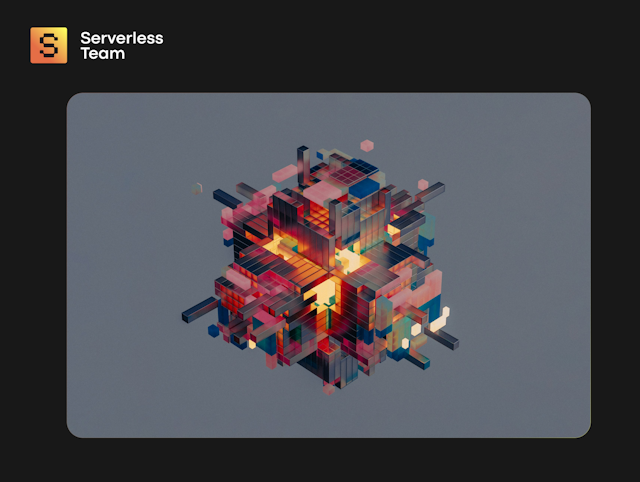Any IoT project is an ambitious endeavor just by its nature: creating a product for unusual devices and potentially tackling unique problems. However, going for serverless IoT can simplify your development somewhat and free up your team to focus on the project’s quality. In short, going serverless lifts the burden of deploying and scaling, putting it onto your provider’s shoulders.
However, you understand we wouldn’t be doing a full guide on Lambda and AWS IoT architecture in business if it was a 100% simple and perfect solution. So, in this article, we will discuss the potential problems of going serverless in IoT, while highlighting its benefits. This will be a well-rounded and balanced look from Serverless, using our own experience.

We take care of serverless development so you can focus on your business
Don't want to wait for our site launch? Let's talk about your idea right now.


Potential Advantages of Serverless IoT Architecture
Let’s start off on a good note and discuss what you get when you opt to go serverless for your IoT project. If everything goes smoothly, you get all of these benefits and more:
- Better scalability
- Less time and resources spent on management
- More cost-effective
Better Scalability
Your decision to optimize IoT with serverless architecture will inevitably help your project grow smoothly. By relying on giants like Amazon and Microsoft, you get the advantage of their server structure. This means you get the kind of resource base that a regular company can’t afford to build.
Those resources mean your solution can sustain higher numbers of concurrent users without any lag or downtime. As a result, you can capture a much larger market niche with a reputation for a quality service that’s always online. You really boost your IoT potential with serverless and can take more risks with a giant cloud platform serving as your safety net.
Delegated Management
With IoT enabled serverless computing, deployment, and server management will be handled by your vendor of choice. Whatever corporation you choose will provide security and maintenance, covering two crucial parts of your service. This way, you never have to worry about the data you store or the server state after you push an update.
Cost Efficiency
There are obvious savings associated with serverless IoT - you don’t have to pay for hardware and related costs. That means you’re not spending extra on maintenance, expanding your network, and the space needed for that hardware.
However, there’s an extra benefit in building your IoT infrastructure with serverless. With this model, you can determine when your resources are used and pay based on that. Basically, if you only need the computing power for an hour or two a day, you’ll only have to spend money during those hours. This can really add up and save a solid chunk of budget.

Kyrylo Kozak
CEO, Co-founderGet your project estimation!

Going Serverless in IoT: Risks and Mitigations
As we hinted before, the serverless approach to IoT deployment has some potential downsides. But if you have a professional team or a trusted vendor, they don’t have to be deal breakers at all. In this section, we’ll talk about the possible risks of serverless and ways to address them.
Loss of Control
When you run your own server environment, you have precise control over it. From the type of hardware to the uptime to resource management, it depends on your whims. So, while serverless may free you from managing the server side of things, it also limits your ability to control everything.
It doesn’t have to be a problem, though. For this, accept a particular change in flexibility and account for it during IoT integration with serverless. You can adapt your code to the platform’s hardware, but micromanaging resources isn’t the most effective approach anyway. What matters is choosing a vendor that provides clear communication channels and offers you tools to gain some control back.
Vulnerability to Attacks
While partnering with a big company guarantees some serverless security, no fortress is impenetrable. And if your infrastructure gets attacked when you run a traditional environment, you can dedicate all your resources to protect it. However, with a big platform, you will not likely be priority number one. Should a problem occur, you can’t solve it on your own.
You can address this by focusing on security during development and adding extra measures to protect your system. As is often the case, serverless and IoT work better when you go the extra mile during development.
Getting Started with a Serverless Approach to IoT
While there isn’t one set path, switching to serverless becomes easier when you follow a few steps. First, you must understand what you seek with this transformation. This will help you choose the right tools and platform, laying out a plan for the future.
Next, starting your migration by carrying over low-risk parts of the system is crucial. That way, you can identify problems early on and fix them without putting essential components on the line. Once you’re sure the transition to IoT with serverless framework can go smoothly, apply continuous delivery and automate your code testing.
These small details will really simplify your move to serverless, especially when it comes to IoT projects. Their plentiful data and strong emphasis on security requires a level-headed approach, and these tips will help set the course.
Trends in Serverless Computing and the IoT Landscape for 2024
Both serverless systems and IoT connectivity are still seeing interesting new developments. In this section, we’ll talk you through a couple of the most exciting trends in these niches for 2024.
The core trend for 2024 is data streaming, with 44% of polled companies calling it a top priority. This approach boosts profitability and responsiveness. With faster streaming, businesses can process operation data faster and make informed decisions. The chief tool for this case is probably Apache Kafka, though new capabilities may arise this year.
On the IoT side of things, the market is to adopt artificial intelligence and machine learning on a broader scale. It requires more processing power, pushing companies to go serverless for faster learning. The boost of IoT efficiency through serverless results in a competitive advantage, pushing the business higher in the market.
Plus, data security is still a pressing issue, making partnerships with companies like Amazon and Google a wise move. As IoT devices collect and process a lot of user information, the encryption and security practices of these giants become essential.
Best Practices for Implementing Serverless and IoT
We won’t go into the nitty-gritty of working with serverless architecture as your team should already know their approach. But we do want to highlight a few special industry insider tips that will work well for you. These will be focused on security, as we’ve stressed their importance time and time again.
First and foremost, remember that each function in a serverless environment will have its own purpose and doesn’t need to have any access above it. Splitting them into different levels won’t affect your system negatively but will provide a bit of extra security. As functions won’t affect any data you protect from them, a single function having a failure won’t damage the whole architecture.
Another important aspect is runtime security, as certain attack vectors rely on code injection. Having real-time tracking of your system’s behavior protects you from these dangers. While no system is foolproof, you can really limit the ways into your system and safeguard data properly.
Our Team as Your Serverless Development Partner
We’ve discussed the pros and cons of serverless IoT, and in the risks section, we highlighted how much a good team matters. If you’re working with professional developers, you’re guaranteed to reap all the benefits while minimizing risks. And we’d be remiss if we didn’t show you the strength of the Serverless team based on our experience with IoT projects.
One of our favorite examples is Millnorway, Norway’s biggest household appliance manufacturer. The company used an expensive and slow IoT solution to process statistical data, gauging their device metrics. With hundreds of thousands of device to process, Millnorway understood they needed a different, custom approach.
The Serverless developer team built a new API from the ground up, going fully serverless. We set up data management through TimescaleDB and used AWS IoT Core to manage the devices. The latter was chosen for scalability purposes, as well as being more cost effective and easy to onboard. Millnorway got all the benefits of being part of the AWS ecosystem by investing in serverless IoT technology.
Conclusion
In this article, we’ve covered the ups and downs of using serverless solutions for IoT. With some tips on getting started with this model, you should feel ready to choose. Of course, a switch like this can be a risk, even when you’ve read up on it and know what you’re doing.
Throughout the guide, we have made one thing clear – going serverless is easier with a reliable partner – a partner like us. The Serverless team has been helping companies develop their potential for over a decade. We have run AWS IoT projects and reinforced cybersecurity in serverless structures.
So, if you want certainty when going for serverless IoT, contact us now.





